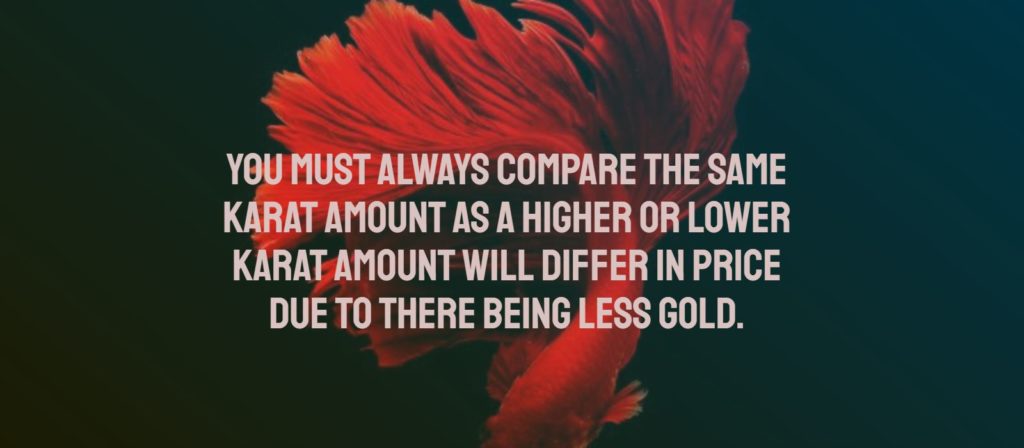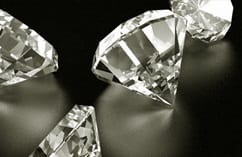Have you ever been in a jewellery store and observed that a ring in yellow gold costs less than the same ring made of white gold? Depending on the jeweller you purchase from you may find that white gold sometimes costs more. But is white gold worth more than yellow gold? The answer to this question will depend on a few factors but yes, white gold may be worth more than yellow gold. In this article we will help you to understand the differences between white and yellow gold, how each are made, and why one might be priced higher than the other.

It is important to keep in mind that white, yellow and rose gold are all still derived from the same source – true gold. But how it is made into the jewelry and gold items that we purchase makes a difference. Even though it may look different all colours of gold are still just that, gold.
What is White Gold?
White gold is a beautiful precious metal that is commonly used in creating rings and other jewellery or decorative items. Though it does not look like pure gold it is in fact derived from pure gold. As pure gold is too soft to make items such as jewellery on its own it is commonly combined with other metals in order to both strengthen the pure gold white also creating beautiful colours.
In order to make white gold pure gold must be combined with another metal. In most cases, pure gold is combined with palladium or silver in order to create the beautiful white gold tone. Once made into an alloy the white gold can be used to create all kinds of jewellery and other items.
What is Yellow Gold?
Just like white gold yellow gold is pure gold mixed with another metal to strengthen the gold and make it usable in different forms. Though yellow gold looks like pure gold it isn’t gold alone. Most often yellow gold is mixed with zinc or copper in order to achieve the strength and colour of yellow gold. The amount of gold that is actually in the alloy can be identified by its karat number. To learn more about how gold is made see our previous article “How is Gold Made?”.
What Does The karat number mean?
Karat is the way in which we measure the purity of gold. Pure gold that is not mixed with any other metal is 24 karats. When pure gold is mixed with another metal the karat number is reduced to indicate that it is no longer pure gold. For example, 18 karat gold means that there is 75% pure gold and 25% of another metal mixed with the pure gold. Both yellow and white gold can vary in the purity of gold but are typically 18 or 14 karats for jewellery.
It is important to note that as the karat number decreases this does not mean that the value of gold decreases. The gold is still present and is still of value. The only thing that decreases is the amount of gold in a piece of jewelry. This explains why 18 karat gold is more expensive than 14 karat gold. It is not that the gold in 14 karat gold is inferior, there is simply just less of it.
Which One Is Worth More?
Now that we know that white gold and yellow gold are both alloys of pure gold mixed with another metal you may be wondering, which is worth more? To answer this question, you will need to know both the karat number and type of metal mixed with gold. You must always compare the same karat amount as a higher or lower karat amount will differ in price due to there being less gold.
White gold is commonly mixed with silver while yellow gold is often mixed with copper. Both 18 karat white gold and 18 karat contain the same amount of gold. As silver is more expensive than copper, white gold becomes more expensive than yellow gold.
The value of gold does not change but the price of the gold will vary based on the value of the metal it is mixed with. This is true for all types of gold including rose gold which is often worth less than both white and yellow gold as it has a higher content of copper. For more information on rose gold see our previous article “What is Rose Gold?”

Which One Should I Buy?
Keeping in mind that the value of the other metals mixed with pure gold is what makes the value change, your choice really comes down to personal preference. Pure gold will have the same value, but the different metals mixed with it change the price of the finished product.
Having different types of gold colours to choose from can be beneficial to someone looking to stay within a budget. But most people will find that they will purchase a piece of jewellery because they love it and the colour they have chosen. Though the values of the item may be slightly different based on the gold colour the value of the gold itself should not be a concern, no matter what the colour, your item is gold!








